How to use a DeWalt Angle Drill?
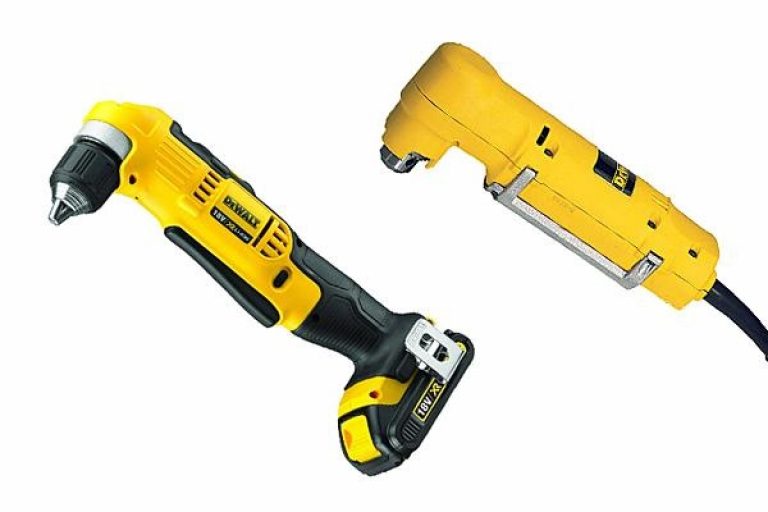
At Wonkee Donkee, we believe that before you use any power tools it is vitally important that you read and understand all of the functions and safety advice. Our number one tip is to always be safe when using any power tools and that includes wearing the appropriate personal protective equipment for the task!
Charge the Battery!
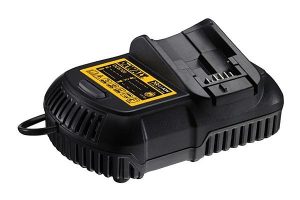
For best results charge the batteries up fully before first use. Plug the charger into a suitable 230V outlet before sliding the battery pack into the base of the tool. A red light will start blinking, showing that charging has begun.
When charging is complete – which will take between 55 and 90 minutes, depending on battery capacity – the light will remain on continuously.
Inserting a Bit
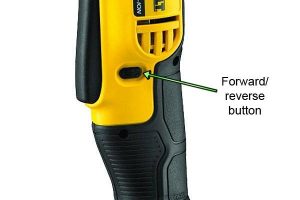
DeWalt’s cordless angle drills have keyless chucks, so inserting and removing bits is simple. First disconnect the angle drill from its power supply, then slide the forward and reverse button into the central position. This activates the spindle lock, which shuts off the tool and allows you to adjust the chuck one-handed and without any risk of injury.
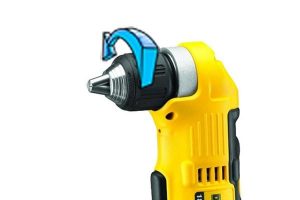
To open the jaws, hold the base of the chuck in one hand to steady the angle drill. With the other hand, turn the collar of the chuck in an anti-clockwise direction until its jaws open wide enough to accept the bit.
For the best results, only use sharp bits and avoid any that have become worn or damaged.
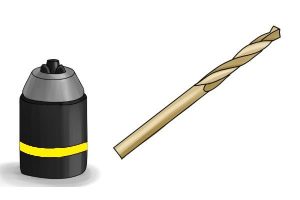
Push the bit, or other attachment, into the jaws of the chuck as far as it will go until you feel it engage.
Tighten it up by turning the chuck’s collar in a clockwise direction with one hand while holding the angle drill with the other until the jaws are clamped tightly around the attachment.
Which Gear?
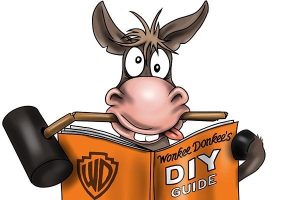
The gears in your drill serve the same purpose as the ones in a car. Selecting a low gear means the tool will run at a slower speed but deliver more torque. If you put it in a higher gear it will go faster but deliver less torque.
Choose a high gear for working on softer materials or smaller screws, when less torque is required. A low gear is best for drilling, and for tackling tough materials or larger screws, when more torque is needed.
Changing Gears
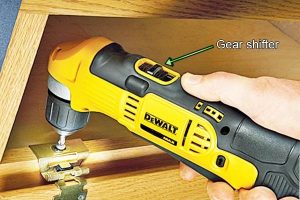
Never change gears while the angle drill is running – always wait for it to come to a complete halt first.
To select speed 1 (high torque, low speed) slide the gear shifter forward, in the direction of the chuck. To select speed 2 (low torque, high speed) slide the gear shifter backwards.
Setting Forward or Reverse

Put the angle drill into forward rotation by releasing the trigger, then pressing the forward/reverse button on the right side of the machine.
To put it into reverse, press the forward/reverse button on the left side of the machine. The forward position is for inserting screws or drilling, while the reverse setting is for removing screws or backing out drill bits.
The central part of the control switch locks the tool into the off position.
Getting a Grip!
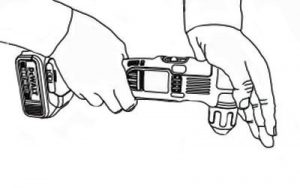
Select the speed and torque range you require using the gear shifter. For maximum control, grip the angle drill with both hands – one on top of the drill, the other on the main handle – wherever possible.
What is different with a Corded Angle Drill?
Corded and cordless angle drills differ slightly in their operation as well as sometimes in their functions. In this section we look at what is different when using a corded angle drill!
Inserting a Bit
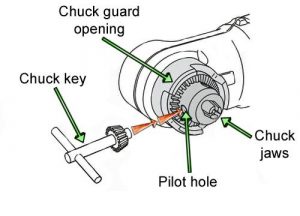
Make sure your drill is unplugged, then line up the pilot hole in the chuck with an opening in the chuck guard. Push the chuck key into the pilot hole, then open its jaws by turning anti-clockwise.
Insert the shank of the bit into the chuck then rotate clockwise to tighten it, using all three holes to prevent any slippage.
Getting a Grip
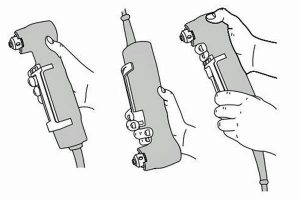
Any power tool should be handled with care. If the angle drill suddenly twists free you could be injured, so try to grip it with both hands whenever possible. You can hold it in various positions, as shown in the diagram.
Off You Go
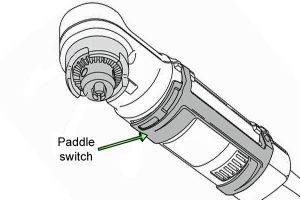
The beauty of DeWalt’s corded angle drill is its simplicity. To set it running, just squeeze the variable speed paddle switch. The harder you press, the faster the tool will go. To stop the drill, simply release the switch. There are no gears or speed/torque buttons to bother with.
General Tips on Drilling
Safety First!
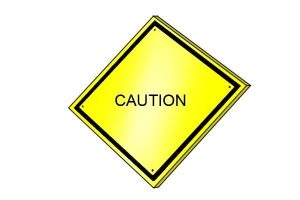
Always turn off your angle drill and disconnect it from the power supply before adjusting the set-up (for instance, changing gear) or inserting/removing bits or other accessories. Remember to check the trigger switch is in the off position before starting the drill up again, so you don’t get taken by surprise.
Drilling Metal
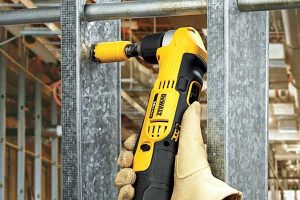
We recommend using a cutting lubricant for drilling metals, except in the case of brass and cast iron, which are best drilled while dry.
When drilling large holes (8 to 13mm diameter) in steel, you’ll find the task much easier if you make a pilot hole first – 4 or 5mm wide should be enough.
Drilling Wood
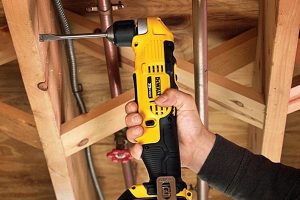
You can make holes in wood with the same twist drill bits used for metal. And if you’re drilling into a thin workpiece that might splinter, it’s a good idea to place a block of wood behind it for support.
To prevent the bit overheating, pull it out of the hole at regular intervals to clear debris from its flutes.
Going Straight
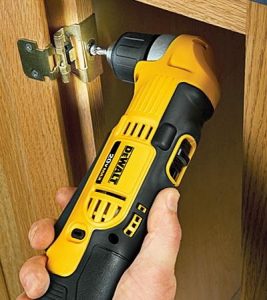
Whichever drill you’re using, make sure you always apply pressure in a straight line with the bit. Let the weight of the tool do the work – use just enough pressure to keep the angle drill biting, but don’t push so hard that the motor stalls or the bit bounces off the surface.
When you pull the bit back out of a drilled hole, keep the motor running to help prevent jamming.
Gently Does It
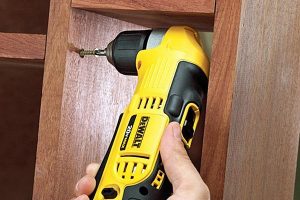
To avoid damaging your work or the surrounding surface, it’s best to start with a low speed then increase it to full power if needed. When you’ve nearly finished drilling the hole, reduce the pressure on the tool and carefully ease the bit through the last few millimetres. This minimises the chance of the angle drill stalling or breaking through the material.
In a Hole?

If the speed begins to drop off while you’re drilling a deep hole, pull the bit partly out of the hole with the motor still running to help bring out debris.
As long as you can see a smooth, even flow of dust coming out of the hole it means you’re drilling at the right rate.
What to do if the drill stalls?
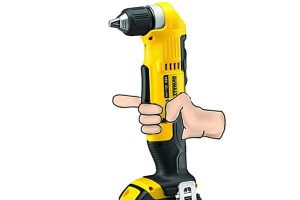
Let go of the paddle switch immediately, pull the drill bit out of the workpiece and find out what caused the motor to cut out. Stalling usually only happens if the tool is being overloaded or used for unsuitable tasks.
On no account should you start pulling the paddle switch in and out in an attempt to restart the motor, as this could damage the drill.






